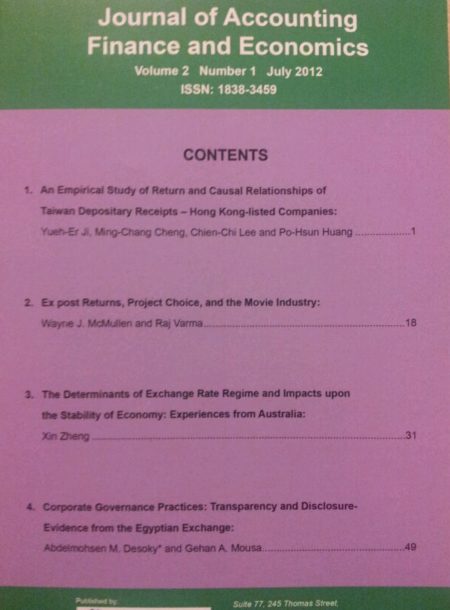Journal of Accounting, Finance and Economics
Vol. 7. No. 1., September 2017, Pages: 103 – 117
International Fund Inflows, Economic Growth and Health Care Development: The Case of Bangladesh
Sakib B. Amin and Muntasir Murshed
Inflow of foreign currencies is believed to generate multidimensional impacts in shaping the economy of the recipient nations, particularly the underdeveloped nations that are unable to finance their development investments. To the best of knowledge, no previous study has focused simultaneously on all the four sources of foreign inflows and their individual effects on Bangladesh’s economic growth and healthcare development prospects. This paper fills this gap by investigating the effectiveness of the foreign inflows in generating favorable impacts on the two utmost imperative macroeconomic targets in Bangladesh during the period 1983-2014.This paper attempts to analyze the individual influences of all the sources of foreign currency inflows on economic growth and health sector development in context of Bangladesh during the period from 1983 to 2014. As per the methodology, the Augmented Dickey Fuller (ADF), Phillips-Perron (PP), Johansen Cointegration tests were followed by the Granger Causality test and the Vector Error Correction Model (VECM) approach. The findings reveal that most of the sources of foreign currency inflows affect both economic growth and health care development in the long run but are ineffective in the short run. Thus, there is a scope for further studies to identify the factors attributing to the ineffectiveness of foreign inflows in the short run and design effective policies in rectifying the problems to attainment of socio economic goals both in the long run and short run.

